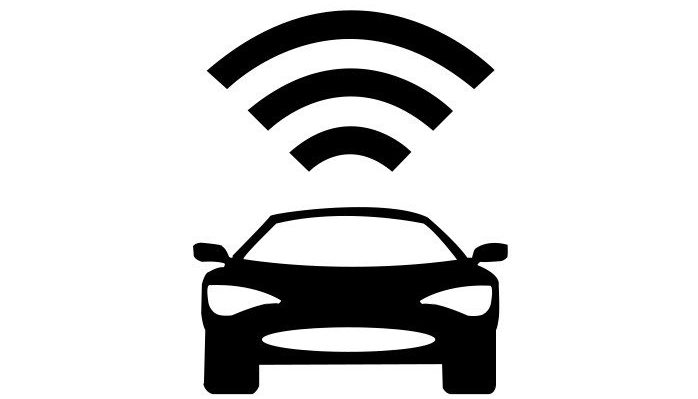Telematics: the revolution has already begun...
Feb 12, 2016 • Features • Fleet Technology • fleetmatics • telematics • telogis • tomtom • Trimble
Telematics looks set to take centre stage over the next couple of years. In one arena, it will play a critical role in the connected car revolution; in another, there are predictions that the way companies buy fleet and workforce management solutions will be transformed. Sharon Clancy reports...
Fleet managers already appreciate the benefits real-time information telematics systems can deliver is deliver such as real-time vehicle location and driver performance data.
Increasingly they come with a range of other features that help field service companies manage both the vehicle fleet and driver behaviour.
This can include compliance with tax and working hours regulations, time-sheet management, vehicle maintenance scheduling and encouragement of more economical and safe driving by service technicians. It’s part of a trend where platform-based modular services for mobile workforce management have been growing in popularity.
Modular platform solutions encourage users to choose those apps and services which best suit their operations, providing customisation within an out-of-the-box offering.
Well, the shift to web-based software-as-a-service means there’s no shortage of platform providers offering tracking and other telematics functions.
Not everyone calls themselves a telematics company, however.
Some telematics services have been added to other platforms as software-as-a-service companies seek to other one-stop solutions to their customers. Vehicle tracking companies, for example, now offer driver and vehicle performance monitoring tools.
Some telematics companies are using their telematics and fleet management expertise to offer a wide range of mobile workforce management: Fleetmatics is leveraging its web based fleet management platform to offer job management and other services. Microlise has developed its Clear solution specifically to answer the needs of field service organisations, while Telogis’s platform has been designed form the start for what the company calls “connected intelligence”.
Whatever the platform is called and whatever its original purpose, what they have in common is that all the modules are developed by the platform provider.
So there are plenty of cloud-based solutions out there that will help you manage your fleet and activities in real-time.
Whatever the platform is called and whatever its original purpose, what they have in common is that all the modules are developed by the platform provider.
There might be partnerships with some third party providers, but it’s all controlled by the platform provider, not the application developer.
Unless you are TomTom, that is.
The Dutch company has moved the goalposts when it comes cloud-based services for mobile workforce management.
Whereas other companies in the telematics space are building their own eco systems with their own apps that customers can choose to customise their solution, TomTom has taken the innovative step of opening up its platform to third-party app developers.
“We want to make sure we have that end-to-end process and we also want to make it very easy,” explains Geroge de Boer, International Alliance, Manager, TomTom.
“All the apps in our app centre have out-of-the-box off-the-shelf compatibility with our Webfleet platform. All you have to do is plug them in,” he explains.
“Just as consumers are finding it to install an app on their smartphones, we want to make telematics as easy for our customers - George De Boer, TomTom Telematics
Meanwhile, in the US, Telogis has become a partner with Apple, developing connected vehicle apps for the iOS platform.
The connected vehicle
There’s a lot of current discussion about connected vehicles and the impact this will have on how we drive and used our vehicles.
Any field service company with a fleet management or telematics solution in place might wonder what all the fuss is about - telematics means they already have connected vehicles.
After all, telematics is all about real-time connectivity and data capture.
Data is collected from the vehicle, sent to a cloud-based platform where it is used for a variety of purposes depending on the app. It might be a location update, a video clip of a driving incident, or fuel consumption data.
However, with vehicle manufacturers’ focus now firmly on the connected vehicle, and with legislative pressure both in Europe and the US, the role of telematics is changing.
Connected vehicles are going to underpin safety initiatives such as Europe’s eCall, designed to ensure emergency services reach the scene of an accident in the shortest time possible by automatically sending an alarm.
After all, once that real-time connectivity is on the vehicle, why waste the opportunity to build-in more functionality?
Taco Van der Leij, Vice President Marketing with TomTom thinks the concept of connected vehicles will catch on fast.
“Usually when new developments such as connected vehicles are starting to evolve you need a killer app that proves there are benefits to customers. But fleet management and vehicle tracking is already happening – as an industry we already have millions of vehicles connected globally.”
With more connected vehicles out there, the number of apps using that connectivity will multiply, predicts Van der Leij.
“Field service companies will have much bigger scope and different possibilities to enhance their business. Imagine what it will be like if all vehicles are connected. You are looking at a different kind of application.”
“There is still a long way to go but that makes it interesting and challenging.”
Some manufacturers are developing their own telematics solutions, others are not reinventing the wheel but turning to experienced partners to provide the platform.
Ford, for example, has turned to Telogis to provide the platform for its telematics solutions in the US and Europe. Other manufacturers are teaming up with local partners.
Business intelligence
The more intelligence you have about your operations, the better equipped you are to be both proactive and reactive in making any changes to the business and the happier your customers will be.
perhaps the biggest break through of all in the telematics space of recent years is that the technology is no longer restricted to the enterprise.
Telematics platforms play a key role: they receive the real-time data from vehicles and mobile device, cut-and-slice it the available data.
However, perhaps the biggest break through of all in the telematics space of recent years is that the technology is no longer restricted to the enterprise.
A raft of pay-per-user software-as-a-service models make the tools available to SMEs, enhancing their competitiveness, levelling the field and bringing thee benefits of up to date telematics systems to the wider market.
With the benefits of implementing a telematics solution both well documented and wide reaching, including improving driver behaviour, fuel efficiency and even reducing insurance premiums it makes sense for any field service company to adopt a telematics program of some sort.
The biggest consideration however, must surely be to take a look at your service management suite as a whole and think how telematics can enhance your existing systems as well as how it can integrate with them.
However, as mentioned above the telematics providers market is a crowded one, with a number of differing approaches to be considered and assessing the pros and cons is an article in itself.
The biggest consideration however, must surely be to take a look at your service management suite as a whole and think how telematics can enhance your existing systems as well as how it can integrate with them.
For while the data produced from a telematics solution can be invaluable, as with any form of data it can also become quickly redundant if the data is not both easily accessible and effectively utilised.





















 Field Service News is published by 1927 Media Ltd, an independent publisher whose sole focus is on the field service sector. As such our entire resources are focused on helping drive the field service sector forwards and aiming to best serve our industry through honest, incisive and innovative media coverage of the global field service sector.
Field Service News is published by 1927 Media Ltd, an independent publisher whose sole focus is on the field service sector. As such our entire resources are focused on helping drive the field service sector forwards and aiming to best serve our industry through honest, incisive and innovative media coverage of the global field service sector.
Leave a Reply